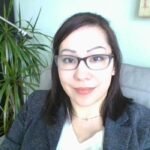The majority of cocaine sold in the US is sourced and trafficked into the country by drug cartels in Colombia. Most cocaine shipments enter the country via the US/Mexico land border. To a lesser extent, cocaine is also transported to the US by air and sea. Not only does the distribution of cocaine in the US create problems within the country, it also plays a major role in violent crimes in Mexico and other South American nations.
The 2020 National Drug Threat Assessment Report found that cocaine availability in the US remains steady, other than some minor diminished supply during the COVID-19 pandemic. [1] Cocaine ranked third, behind only methamphetamine and cannabis/THC, on the list of top 25 most frequently identified drugs.
In 2022, 15% of people in the United States over the age of 12 reported using cocaine at least once in their lifetime. In addition, 3.6% of people over age 12 reported using crack cocaine at least once in their lifetime. [2] This included 17.6% of those over 26 years of age, 9% of those between 18 and 25 years of age, 16.5% of those above 18 years of age, and 0.3% of those between 12 and 17 years of age.
Past year illicit drug use among people aged 12 or older in the US was highest among people reporting two or more races (28.5%) and American Indian or Alaska Natives (25.9%), followed by Blacks (20.8%). It was lowest among Asians (9.8%) compared to all other ethnic groups. [3] The estimate of past year substance use disorders treatment utilization among people who needed treatment was highest among White people (23.5%) and lowest among Asian people (8.3%).
Cocaine addiction and use in the US continues to claim thousands of lives each year. In 2018, the total number of deaths involving cocaine were 14,666. This was the third year in a row that cocaine deaths exceeded 10,000 per year. The number has been increasing steadily over the last decade. For comparison, the number of cocaine-associated deaths in 2010 were 4,183.
Deaths due to intentional or unintentional polydrug use are a rising concern. According to the DEA’s 2019 National Drug Threat Assessment Report, there has been an increase in laboratory submissions of “speedballs” (cocaine and heroin) and “super speedballs” (cocaine, heroin, and fentanyl). These drugs (cocaine and opioids) are intentionally mixed for users to experience the “high” from cocaine and the depressant effect from the opioid (heroin and/or fentanyl). This is done to ease the sharp comedown or crash from cocaine. [4]
The adulteration can also be unintentional. Multiple drugs are often processed in the same facilities, which can result in mixing of illegal substances. For example, cocaine and fentanyl may be packaged together for sale on the streets and fentanyl may contaminate cocaine without the knowledge of the seller or user. This can lead to serious adverse reactions in drug users who are not habitual opioid users and have not developed an opioid tolerance.
The U.S. Centers for Disease Control and Prevention (CDC) reported 51,435 total drug overdose deaths in 2022. The highest number of cocaine-related drug overdose deaths occurred in DC (53.4 per 100,000 resident population) and the lowest number in Nebraska (0) and Utah (1.3 per 100,000 population). [5] Of the total number of drug overdose deaths nationwide, 29.7% or 15,268 involved cocaine, which was the most common stimulant involved in fatal overdoses. Approximately 17.5% deaths involved a combination of illegally made fentanyl and cocaine. About 4.9% of deaths occurred due to cocaine alone without other opioids or stimulants.
Further demographic data reveals that 70.5% of people who died from drug overdoses were male, 66.2% were White, and 26.6% were in the 35-44 years age group.
Importantly, the data showed that over 64% of drug overdose deaths had the potential to be prevented with interventions, including current treatment for substance use disorders, witnesses and bystanders being present, mental health diagnosis, prior overdose, and recent release from an institutional setting.
Last updated: May 27, 2025
Hailey Shafir, M.Ed., LCMHCS, LCAS, CCS
Hailey Shafir is a licensed addiction specialist and mental health counselor. She graduated from North Carolina State University with a master of education in clinical mental health counseling in 2012, and has developed deep expertise in the areas of mental health, behavioral addictions and substance abuse. She is passionate about using this knowledge to raise awareness, provide clear and accurate information, and to improve the quality of treatment for these disorders.
Hailey is an LCMHCS (license number: S9539) under the North Carolina Board of Mental Health Counselors, and an LCAS (ID: LCAS-21333) and CSS (ID: CCS-20721) under the North Carolina Addictions Specialist Professional Practice Board.
References
| ↑1 | Drug Enforcement Administration. National Drug Threat Assessment 2020. Available online. Accessed on March 11, 2024. |
|---|---|
| ↑2 | SAMHSA. National Survey on Drug Use and Health 2022. Available online. Accessed on March 11, 2024. |
| ↑3 | SAMHSA. Racial/Ethnic Differences in Substance Abuse 2015-2019. Available online. Accessed on March 11, 2024. |
| ↑4 | DEA. National Drug Threat Assessment 2019. Available online. Accessed on March 11, 2024. |
| ↑5 | CDC. SUDORS Dashboard Fatal Overdose Data. Available online. Accessed on March 11, 2024. |

